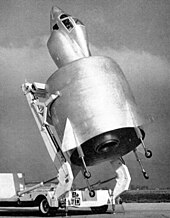A vertical take-off and landing (VTOL) aircraft is one that can take off and land vertically without relying on a runway. This classification can include a variety of types of aircraft including helicopters as well as thrust-vectoring fixed-wing aircraft and other hybrid aircraft with powered rotors such as cyclogyros/cyclocopters and gyrodynes.

A tiltrotor is an aircraft that generates lift and propulsion by way of one or more powered rotors mounted on rotating shafts or nacelles usually at the ends of a fixed wing. Almost all tiltrotors use a transverse rotor design, with a few exceptions that use other multirotor layouts.

The Hiller Aviation Museum is an aircraft history museum located at the San Carlos Airport in San Carlos, California. It has over fifty aircraft on display, as well as flight simulators, plane cockpits and other exhibits tracing aviation history. The museum was founded by Stanley Hiller in June 1998 and is endowed by members of the Hiller family. It specializes in Northern California aircraft history and helicopter history. The museum is also an affiliate within the Smithsonian Affiliations program.

A vertical and/or short take-off and landing (V/STOL) aircraft is an airplane able to take-off or land vertically or on short runways. Vertical takeoff and landing (VTOL) aircraft are a subset of V/STOL craft that do not require runways at all. Generally, a V/STOL aircraft needs to be able to hover. Helicopters are not considered under the V/STOL classification as the classification is only used for aeroplanes, aircraft that achieve lift (force) in forward flight by planing the air, thereby achieving speed and fuel efficiency that is typically greater than the capability of helicopters.
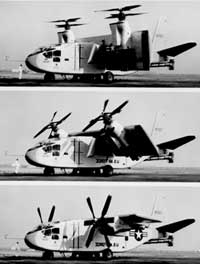
A tiltwing aircraft features a wing that is horizontal for conventional forward flight and rotates up for vertical takeoff and landing. It is similar to the tiltrotor design where only the propeller and engine rotate. Tiltwing aircraft are typically fully capable of VTOL operations.

A tail-sitter, or tailsitter, is a type of VTOL aircraft that takes off and lands on its tail, then tilts horizontally for forward flight.

The Convair XFY-1 Pogo was an experimental V/STOL aircraft developed during the early years of the Cold War. It was intended to be a high-performance fighter aircraft capable of operating from small warships. Lockheed and Convair were awarded contracts to build experimental VTOL fighters, with Convair producing the XFY-1, also known as the "Pogo." It was developed as an attempt to create a practical V/STOL aircraft.

The Focke-Wulf Triebflügel, or Triebflügeljäger, literally meaning "thrust-wing hunter", was a German concept for an aircraft designed in 1944, during the final phase of World War II, as a defence against the ever-increasing Allied bombing raids on central Germany. It was a vertical take-off and landing tailsitter interceptor design for local defense of important factories or areas which had small or no airfields.

The Lockheed AH-56 Cheyenne is an attack helicopter developed by Lockheed for the United States Army. It rose from the Army's Advanced Aerial Fire Support System (AAFSS) program to field the service's first dedicated attack helicopter. Lockheed designed the Cheyenne using a four-blade rigid-rotor system and configured the aircraft as a compound helicopter with low-mounted wings and a tail-mounted thrusting propeller driven by a General Electric T64 turboshaft engine. The Cheyenne was to have a high-speed dash capability to provide armed escort for the Army's transport helicopters, such as the Bell UH-1 Iroquois.

The Lockheed XFV was an American experimental tailsitter prototype aircraft built by Lockheed in the early 1950s to demonstrate the operation of a vertical takeoff and landing (VTOL) fighter for protecting convoys.

The SNECMA C.450 Coléoptère was a tail-sitting vertical take-off and landing (VTOL) aircraft designed by the French company SNECMA and manufactured by Nord Aviation. While work on the aircraft proceeded to the test flying phase, the project never progressed beyond experimental purposes.
The Focke-Wulf Ta 400 was a large six-engined heavy bomber design developed in Nazi Germany in 1943 by Focke-Wulf as a serious contender for the Amerikabomber project. One of the first aircraft to be developed from components from multiple countries, it was also one of the most advanced Focke-Wulf designs of World War II, though it never progressed beyond a wind tunnel model.
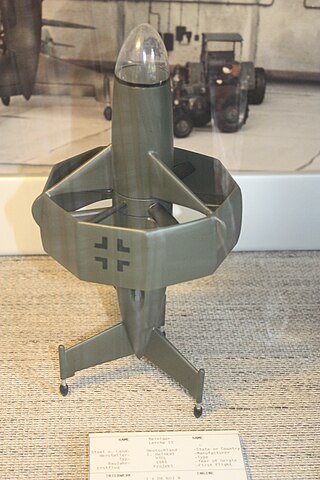
The Heinkel Lerche was the name of a set of project studies made by German aircraft designer Heinkel in 1944 and 1945 for a revolutionary VTOL fighter and ground-attack aircraft.
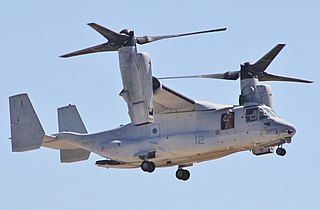
A powered lift aircraft takes off and lands vertically under engine power but uses a fixed wing for horizontal flight. Like helicopters, these aircraft do not need a long runway to take off and land, but they have a speed and performance similar to standard fixed-wing aircraft in combat or other situations.

The SNECMA Atar Volant or C.400 P1 was a French turbojet engine produced by SNECMA as part of their "Atar" series. Encased in a basic fairing which could hold fuel and remote-control equipment, the unit weighed 5,600 pounds (2,500 kg), and generated a thrust of approximately 6,200 pounds-force ; the Atar Volant was able to cause vertical lift, which was precisely its purpose. There were later Atar Volant models, each made improvements and alterations to the previous designs, and eventually resulted in a full-fledged craft.
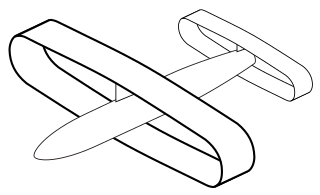
A closed wing is a wing that effectively has two main planes which merge at their ends so that there are no conventional wing tips. Closed wing designs include the annular wing, the joined wing, the box wing, and spiroid tip devices.
The Heinkel Wespe was a project study by the German company Heinkel for a tail-sitting, vertical take off and landing-interceptor aircraft. The aircraft did not have conventional wings, but instead featured a large rotor. Completed in 1945, it remained untested due to a lack of material at the end of the Second World War. A related project was the Heinkel Lerche.

The Convair Model 200 was a design for a supersonic vertical takeoff and landing (VTOL) fighter requirement for the United States Navy Sea Control Ship. Further versions were planned for conventional catapult launches and landing using the arresting gear.
